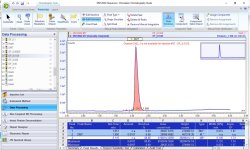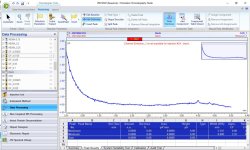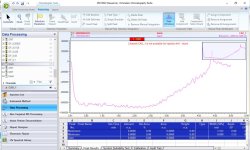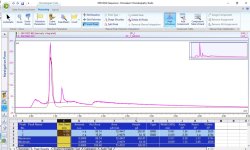As I’ve mentioned elsewhere, I bought a Corona Veo RS, charged aerosol detector, to quantitate analytes which lack chromophores and ionizable side groups; nice addition to my mass spec and fluorescense detector (FLD-3400RS). It is an evaporative analytical method, along with evaporative light scattering detection (ELSD), CAD is relatively new, with the first patent filed in 2002, and the first commercial detector reaching the market in 2005. This particular detector is excellent for characterizing residues from solvents, and impurities in samples.
 en.wikipedia.org
en.wikipedia.org
[YOUTUBE]
Charged aerosol detector - Wikipedia
[YOUTUBE]







